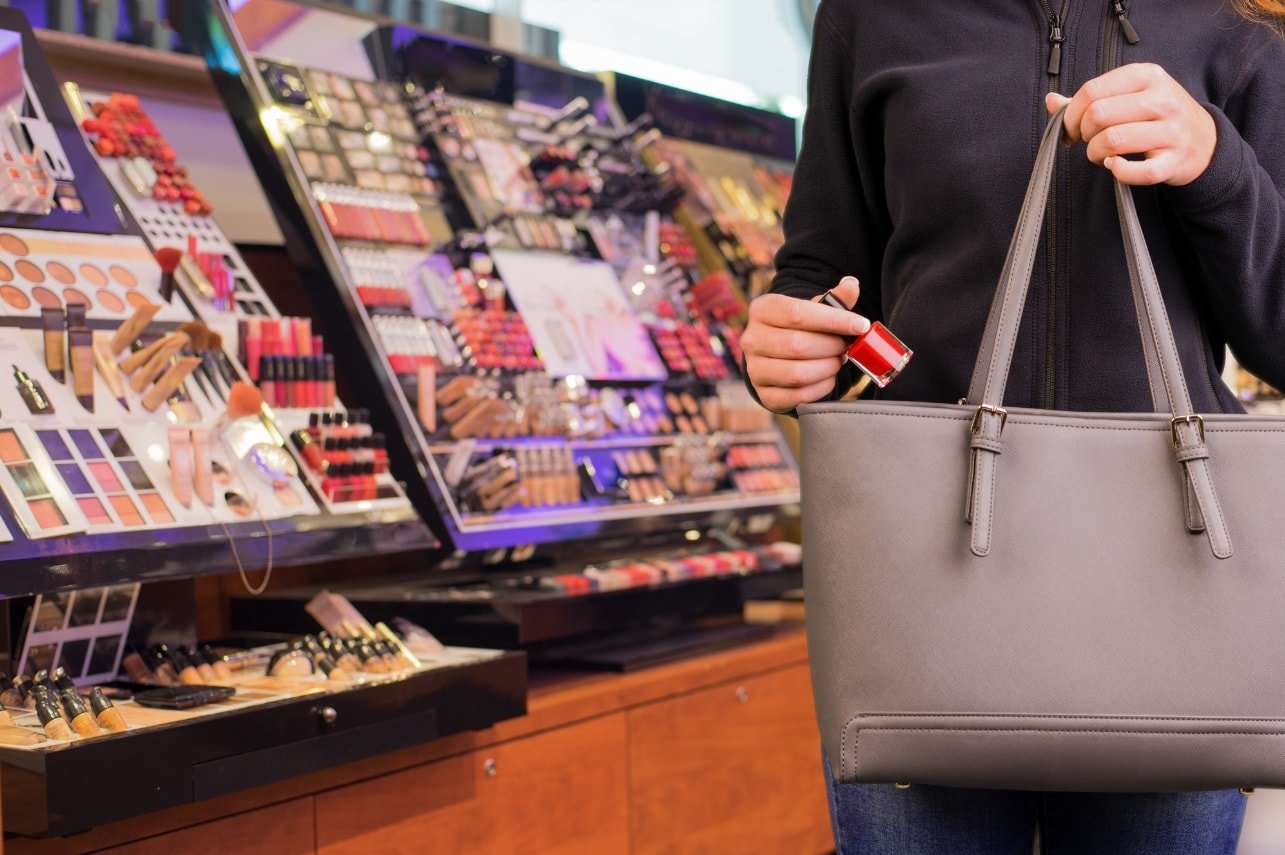Last Updated on January 22, 2025 by Alarm New England
Whether you’re just starting out or a seasoned veteran, this guide was created to help you identify and prevent shoplifting.
Inventory shrinkage increased to $48.9 billion in 2016, according to a survey conducted by the NRF and the University of Florida.
The study also noted that 23 percent of retailers experienced a shrink rate of 2 percent or greater. And, the trend seem to show no signs of slowing.
The goal of this guide is — not just to highlight the problem — but to provide easy, actionable tips that small and medium-sized business owners can use to keep their premises safe and reduce revenue loss in a cost-effective way.
Let’s get started.
Table of Contents
What is Shoplifting?
Quick Tips to Prevent Shoplifting
- Clear, measurable goals
- Store layout
- Prudent hiring practices
- Staff-customer ratio
- Professional-grade alarm systems
- Detailed return policy
- Security cameras
- Use EAS tags
- Lighting
- A personal connection
Introduction
As a small retail business owner, shoplifting — and your approach to preventing it — can have a big impact on your bottom line.
If left unchecked, it can become a significant drain on your business — from lost merchandise to break-ins that require extensive repairs.
Shoplifters can be individuals acting alone or operate in a more organized way with groups of professional thieves working together.
In the retail world, shrinkage, or shrink, is the term used to describe a reduction in inventory due to shoplifting, employee theft, or other errors.
There are four major sources of inventory shrinkage in retail:
- Employee theft
- Shoplifting
- Paperwork errors
- Supplier fraud
Shoplifting: A look at the numbers
According to the National Retail Security Survey, the number one source of shrinkage for a retail business is shoplifting.
 (Source: National Retail Security Survey)
(Source: National Retail Security Survey)
Shoplifting, once second to employee theft as the most common source of inventory loss — recently moved into the number one spot.
Retail shops are now investing in various ways to curtail theft and reduce shrinkage.
Security measures such as cameras and digitized tags that set off alarms have helped reduce losses, but fewer shoplifters are stealing more per incident.
The average cost per shoplifting incident doubled in 2017 to $798.48.

(Source: National Retail Security Survey)
Employee Theft
Coming in at a close second to shoplifting is internal or employee theft –when company workers steal or misappropriate funds or goods.
busUnfortunately, this type of loss typically receives far less attention than shoplifting, even though it accounted for 34.5 percent of shrinkage in 2014.
The average dollar loss per dishonest employee was $1,922.80, a 62% increase from 2016.
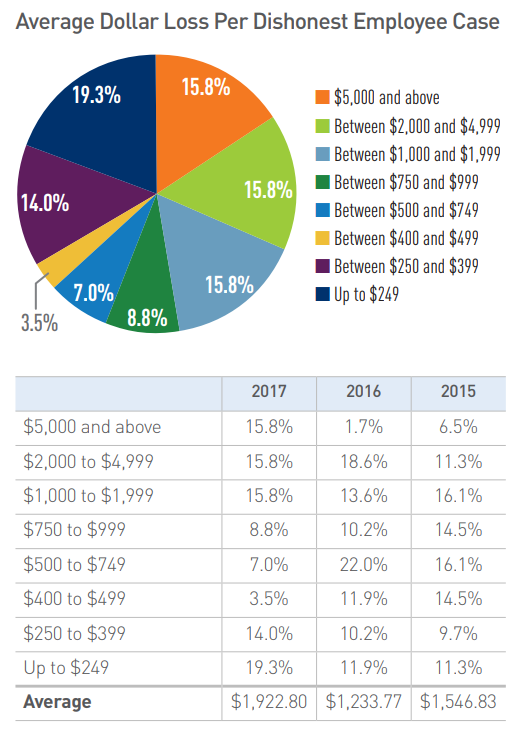 (Source: National Retail Security Survey)
(Source: National Retail Security Survey)
To combat shrinkage, most retail stores train their employees and often have security equipment in place to deter theft and prevent significant losses.
Loss prevention can include everything from locks and fire exits to security caches and electronic article surveillance (EAS) tags. It may also include a particular strategy or approach such as access control, executive protection plans, cybersecurity, and crisis management strategy.
The Difficulty with Profiling Potential Shoplifters
According to the National Association for Shoplifting Prevention, there is no single shoplifter profile.
Men and women steal equally as often, and seventy-five percent of all shoplifters are adults.
Appearance alone does not indicate intent.
There are many stereotypes related to types of shoplifters that target age, race, and gender. However, a study from the University of Florida found many of these are untrue.
In reality, most shoplifters are middle-aged and earn a respectable wage at their day job. Treating all shoppers with the same level of trust and respect is essential for any successful retailer.
Terrence Shulman, founder and director of the Shulman Center for Compulsive Theft, Spending and Hoarding, focuses on behavior and motivation to categorizes shoplifters into seven groups:
- Addictive-compulsive shoplifters who suffer from anger issues
- Impoverished people who steal out of economic need
- Thrill-seekers who shoplift for the adrenaline rush
- Drug, alcohol or gambling addicts who steal to fuel their habit
- Kleptomaniacs who steal out of compulsion
- Absent-minded people who simply aren’t aware of their actions
- Professionals who steal for profit
Regardless of a shoplifter’s underlying motivations, it’s the habitual offenders who cost businesses the most.
Their focus tends to be on stores that lack the proper training and security equipment to make shoplifting difficult and record or track criminal activity in their store.
A survey of 20,926 adult and juvenile non-professional shoplifters revealed that 27 percent of shoplifters are habitual repeat offenders who steal on a daily or weekly basis. This fraction is responsible for about 90 percent of the nonprofessional losses and approximately 85 percent of total shoplifting losses.
It’s neither cost-effective nor feasible to reduce shoplifting to zero at any retail location, so any effective strategy to combat customer theft needs to have the following two goals:
- Reduce the frequency of theft by the same person
- Keep that individual from “repeat” shoplifting
In order to make a shoplifter’s job next to impossible, we first have to understand how they get away with their crimes.
Common Shoplifting Methods
These are a few of the tactics shoplifters use to steal merchandise:
– Concealing: stuffing items in jackets, purses, or bags and leaving the store
– Walkouts: walking out with items in hand/basket/bag and not paying
– Grab n’ Dash: taking an item and running out with it (a more visible version of the walkout)
– Baby Stroller: pretending to have/or having a baby in a stroller and concealing items in the stroller
– “Slurpee Subterfuge”: coming in with a large empty drink cup and storing items in it
– “Booster Bags”: lining bags with “Faraday fabric” to prevent any signals from escaping, making anti-theft tags ineffective
– Barcode Swap: switching barcodes on expensive items with those of cheaper items
– Item Swap: similar to the barcode swap, this involves removing an item from its packaging and switching it out with another in a different box
– Fitting-room Concealment: concealing items in fitting rooms
– Fake Return Fraud: returning a stolen item to receive cash or store credit
– Consuming On-site: This method is commonly seen in places like grocery stores (for example people eating as they shop)
– Coupon Fraud: reprinting coupons and using them at different stores
These are just a few of the ways that shoplifters operate and not a comprehensive list as we want to focus on prevention in this guide.
How do I identify potential shoplifters?
While there is no single factor that distinguishes shoplifters from honest shoppers, there are potential behavior clues that you may observe — and professional ways to interact with them — to help deter theft and maintain a professional and welcoming environment
Here are some behaviors that could potentially indicate a shoplifter:
- Signs of anxiety or stress in their facial expressions or body language
- Unusual focus on a particular cashier or sales clerk
- Sudden head or eye movements
- Repeatedly entering and exiting a store without purchasing anything
While it’s always fine line between identifying potential shoplifters and maintaining a welcoming and respectful environment for your customers, it’s important to be aware of who is in your store.
With limited employees to keep track of all of the activity going on in a busy store, it’s relatively easy for individuals (or even groups) to shoplift items and walk out without anyone noticing.
Here are a few other tips that might be useful for identifying possible shoplifters.
Are they dressed correctly for the weather?
The clothing people wear should match the weather outside. If they come into your store wearing a long winter coat, and it’s a warm 70 degrees outside, keep an eye on them. Baggy clothing is another red flag, since it can easily conceal merchandise.
Do they frequently look at security cameras and trying to to avoid your salespeople?
It’s not unusual for customers to feel uncomfortable with being watched by cameras or avoid extended interactions with salespeople. But someone who’s obviously trying to stay in a completely different section of the store from them at all times is definitely suspicious.
If you have a clothing store with dressing rooms, here are few other things to consider that can be countered with attentive service.
- Monitoring how many items customers take into a dressing room and how many they leave with
- Checking to see how many people are going into the dressing room
What products do shoplifters like to steal?
Some retail stores are more popular targets based on the nature of the merchandise. Popular targets can include merchandise that is:
- Easy to conceal
- Lacking sophisticated protection
- High in resale value
While larger retailers have the budget and capacity to put a comprehensive deterrence plan in place, most small and medium-sized businesses are on a more restricted budget.
After numerous conversations with security experts and reading the resources and data sheets they provided, we narrowed down a long list of actionable tips to ten.
What can you do to prevent shoplifting?
Tip #1: Establish clear goals for your loss prevention strategies and communicate them to your team.
Examine your store’s historical data. Track your current revenue shrink, your weekly loss, and whether the numbers are trending positive or negative.
Look for any correlation between significant changes– positive or negative — in revenue shrink and other factors such as:
- The season
- Day of the week when it occurs more often
- Changes in the store layout
- New hires
We strongly encourage you to make decisions based on data.
Actionable Tip:
Once you’ve established your goals on paper, start drafting a loss prevention strategy that will help your employees accomplish those goals. Take the following questions into consideration when writing your shoplifting policies and procedures:
- Is your goal to prosecute or recover merchandise?
- Does your store have a zero-tolerance policy for shoplifting?
- Will you prosecute shoplifters under 18 or over 65?
- Is there a minimum dollar amount before prosecuting or issuing a civil demand?
- How will you confront and detain a shoplifter?
- What will you do if the shoplifter shows remorse or offers to pay?
- Who is responsible for calling the police?
Tip #2: Design your store with security in mind.
- Create an open floor plan that allows clear lines of sight to your high-value products. Thieves are less likely to steal if an employee or other guest can easily see the crime happening.
- Minimize the number of blind spots in your store where it’s difficult for your salespeople or security cameras to spot people.
- Install a convex mirror to extend visibility into less accessible or low-traffic sections of the store.
- Reduce shelf height or increase distance between shelves so staff can see customers on the other side.
- Elevate the sales counter/register so staff have greater visibility of the store.
- Merchandise that is prone to theft must be presented as “false opportunity” to any would-be thieves. In other words, you don’t have to keep all of your valuable products covered or locked up as long as someone is keeping an eye on it.
- Keep all unprotected items away from the doors, where it’s most prone to being taken by the “grab n’ dash” shoplifter.
Actionable Tip:
As a small business, it’s ideal to display fewer items so that it’s clear to your sales associates that something is missing.
If you have a large inventory, try to organize merchandise in a way that makes it easy for you to see a gap.
- Empty spaces on shelves are a telltale sign that your store is a victim of shoplifting.
- By pulling all of your products to the edge of the shelf to create a solid wall, you only need a glance to tell you that merchandise is missing.
Tip #3: Hire the right people and motivate them to succeed.
Security begins and ends with your employees. No business security system can compensate for putting dishonest people in a position of power.
Review your hiring process to make sure you’re inviting trustworthy employees to join your team. Carefully selecting employees will go a long way toward reducing unnecessary business losses.
When it comes to new hires, interview applicants thoroughly, check their references, run a background check, verify past employment and education claims, etc.
Make all employees understand the importance of loss prevention. When everyone is on board with preventing revenue loss, you’ll likely see better results in your LP strategy.
Find ways to motivate your staff to want to reduce shrinkage. Clearly communicate your plan and goals so that everyone understands the policy and what actions they need to take to reduce loss.
Empower managers and store workers to have a say in improving shrinkage efforts.
Actionable Tips:
- Consider adopting background checks for your team as a company policy.
- Review your candidates’ social media presences to get a better sense of who they are prior to your interview. This will give you an opportunity to ask them questions and ensure that you two are well-aligned for a successful working relationship.
- Consider a personality test for your potential employees to get a better sense of how they approach problem-solving and work with others.
A team of trustworthy, motivated employees can create an environment that values integrity and help you create a successful loss prevention strategy.
Tip #4: Maintain a low staff-customer ratio.
Shoplifters thrive when stores are busy. More customers means more distracted sales associates, cashiers, and managers.
Shoplifters are more likely to strike at certain times of the day and certain days of the week for this reason (though it varies from store to store).
In general, Wednesday through Saturday are the most popular days for shoplifters, especially in the afternoon and on weekends. Summer and holidays are often high-alert times for theft as well.
Actionable Tips:
- Keep track of the days of the week/month/year when your business sees the most foot traffic and when shoplifters are most likely to plan their visits, Be sure to communicate to your employees to be on alert during these times.
- Schedule an adequate number of employees to work when you expect higher traffic in your store.
- Plan to keep coverage solid during employee breaks. Too many stores only have one employee working at a time. When that employee goes to a store room or use the bathroom, the store is left empty and is an easy mark for a shoplifter.
Tip #5: Install an alarm system.
A monitored security system has been shown to deter thieves. As the graph below shows, almost all retail stores include burglar alarms as part of their loss prevention strategy.
Commercial burglars have repeatedly emphasized in interviews with loss prevention experts that they avoid targets that have point-of-entry protection like a professional-grade alarm.
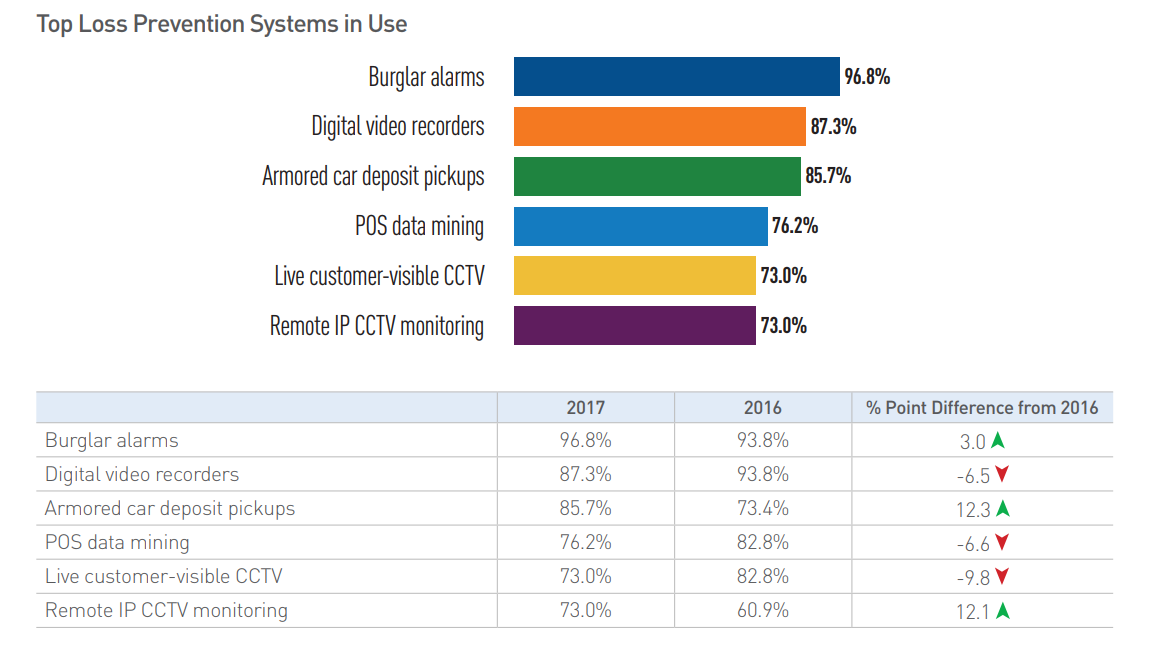 (Source: National Retail Security Survey)
(Source: National Retail Security Survey)
Putting up signs such as “shoplifters will be prosecuted” or “security police patrol this store” have no demonstrable effect on habitual shoplifters.
Shoplifters know how to spot fake door alarms and security cameras. If word gets around that your security system is ineffective or primarily “for show,” your store becomes a target for shoplifters.
Plus, it has the added benefit of reminding your employees that their activity is being monitored too, helping cut down on employee theft.
An alarm system can also identify internal problems.
With the ability to monitor alarm systems remotely, a retailer can have real-time status on every location, on who goes in and out of their store, how long a door was held open, and whether or not a store has armed their system.
Actionable Tip:
Find a professional-grade alarm system that fits your budget and can accommodate the specific needs of your business.
How do you choose an alarm company for your business?
After over three decades in the security business, we have learned from business owners that these are the areas they care about most when selecting a security provider:
- Flexibility to accommodate the business’s specific technical and functional needs
- The ability to support current and emerging technologies
- Industry reputation and experience
- A strong commitment to quality assurance
While cost will always be a major decision factor, the quality of the equipment and service should always comes first.
When choosing an alarm company for your business, make sure they can deliver on all four fronts.
How do business owners make the most of their alarm systems?
Alarms provide peace-of-mind to you and your employees, but they’re also serve a more practical purpose: saving you money.
To have an effective alarm system, you also need trained employees who know how to use it correctly.
A good security company maintains a close connection with you throughout the buying process to address any of your needs or concerns.
Make sure to ask your security provider if they will provide training to your employees to make sure they are comfortable using the system.
Some questions to ask:
- Will they train your employees on how to use the alarm?
- What specifically will they do in their training?
- How long will it take for employees be fully comfortable using the new system?
While companies can try to learn how to use a system on their own, they often find the process to be costly and inefficient.
No one understands your security system as well as your alarm company; that’s why Alarm New England takes exceptional care in educating all of our customers on how to use their systems to the fullest.
That way, you’re more likely to use it, feel safer, and see a more substantial return on your investment.
Tip #6: Crack down on return fraud with a clear return policy.
Fraudulent retail transactions are on the rise — especially as shopping shifts from brick-and-mortar locations to e-commerce. This also makes tracking shopper data complicated.
This type of crime often involves an individual stealing merchandise, and then returning those items for a gift card or other currency.
The National Retail Federation’s Return Fraud Survey says an astonishing 95.2% of retailers have experienced return fraud in 2017, costing them $9.6 billion.
Actionable Tips:
- Require a receipt and ID for accepting cash returns.
- Track customers in a database to take note of fraudulent or excessive returns.
- Only refund in the same form of currency used for the purchase. (For example, if the item was purchased with a credit card, issue a credit to that same card.)
- Limit or eliminate cash refunds. Instead, offer store credit.
- Decide how many days you will allow customers to return the item. (Typically this can range between 30-90 days.)
- Specify the condition merchandise must be received and consider adding a 10-20 percent restocking fee for opened items, unless defective or prohibited by law.
- Make your return policy visible and easy for customers to understand.
- Enforce the return policy consistently. Do not make exceptions for anyone.
- Train employees to spot return fraud, understand the return policy, and thoroughly enforce it.
Tip #7: Install Closed Circuit Television surveillance systems.
Closed-circuit television (CCTV) uses video cameras to transmit a signal to a specific, limited set of monitors.
CCTV cameras are most often used to monitor customer and employee behavior. Some stores use public view monitors to deter theft and provide increased safety and security to regular shoppers.
When used appropriately, such devices are effective in deterring theft and other undesirable activities. They can also be used to monitor customer behavior, assist marketing and sales, and address customer service issues.
Are security cameras effective at reducing shoplifting?
Research on the effectiveness of CCTV systems concluded that security cameras can be effective in retail environments.
However, best practices must be followed for the system to be effective at preventing loss.
The real benefit of CCTV is the way it affects a shoplifter’s risk perception, making them less likely to commit a crime in the first place. Additionally, CCTV appears most effective at combating opportunistic offenses, in which items are small, easily portable, and of relatively high value.
Many studies of the impact of CCTV on retail crime have reached similar conclusions.
Essentially, a well-designed professional-grade CCTV surveillance system often makes good business sense and pays for itself within 1-2 years, whereas businesses almost never recoup the cost of the cheap budget camera systems.
Actionable Tips:
Choosing the right cameras for your setup isn’t easy, so here are some basic information that you can use to get off to a good start.
- Have someone explain the advantages of each type of camera before buying. Make sure every part of your system is compatible with one another and will not result in bottlenecks.
- Do the math before shopping. There are hundreds of cameras available; know the features of different cameras and the additional cost that comes with said features.
- Create a purpose for every camera. Every camera needs to serve a particular need by watching a specific area.
For more detailed information, review another great resource, our Beginner’s Guide to Choosing a Security Camera.
Tip #8: Use EAS tags.
There are 3 common types of anti-theft tags: Acousto-Magnetic tags, RFID tags, and Spider Wrap.
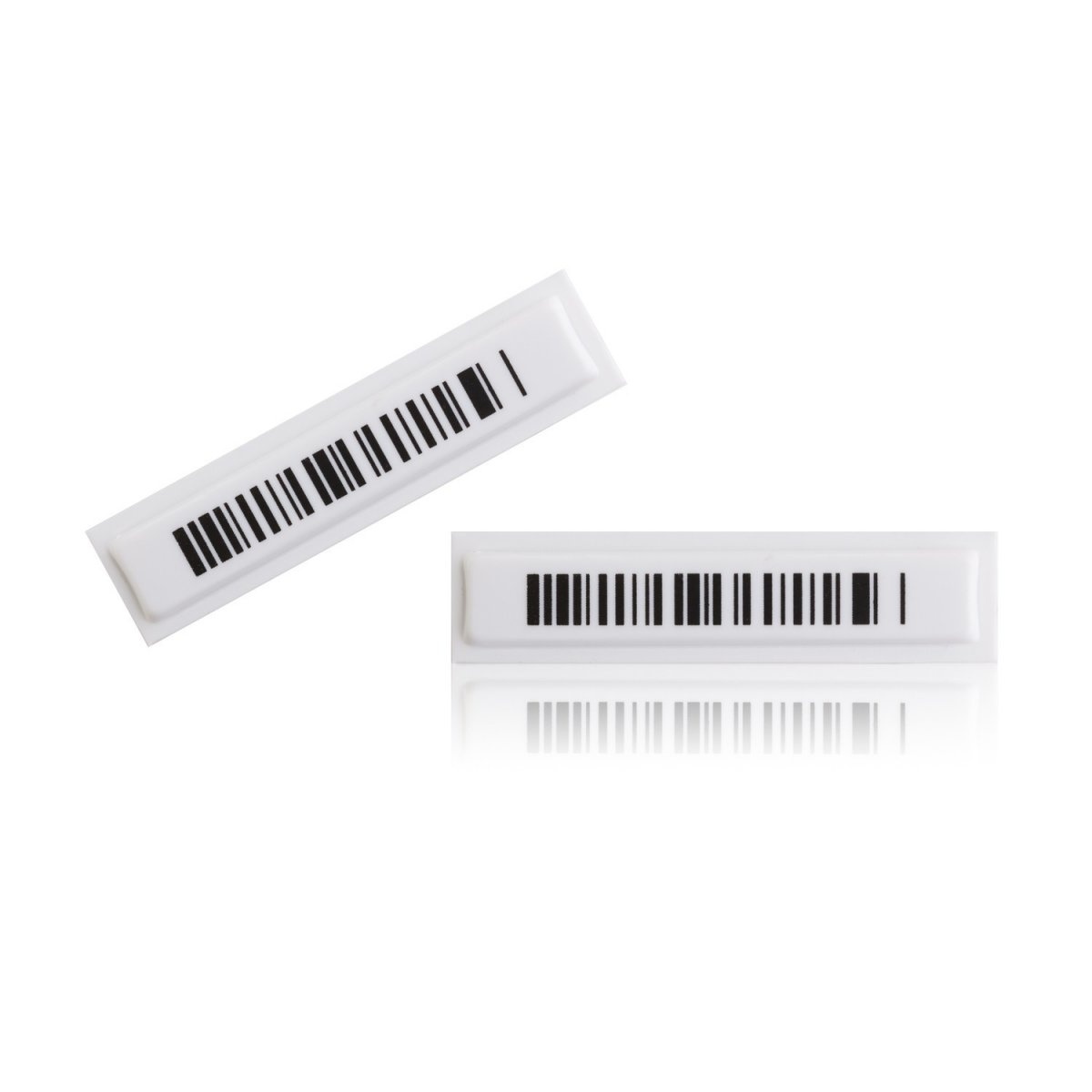
Acousto-magnetic tags
These are narrow, white tags that are about the length of your thumb.
They are usually deactivated by cashiers by passing them under a demagnetizer. You’ll also find large, plastic variations of these on clothes, some of which contain ink packs.
One of the long sides is adhesive, allowing it to be stuck on the packaging of products. Sometimes, they are put inside packaging.
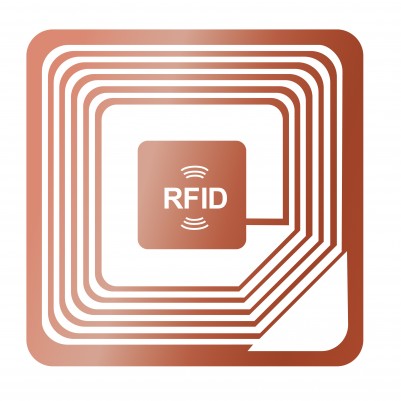
RFID tags
These are larger stickers that have a spiral-shaped metallic circuit printed on the adhesive side.
The benefit of RFID is it’s less bulky, can be applied selectively on high-value items at individual stores rather than by the manufacturer, and it can store detailed data about a product as it travels along a supply chain.
In doing so, it helps reduce employee theft and out-of-stocks. So much so that by 2012, over half of all US retailers had adopted item-level RFID.

Spider wrap
Unlike the other tags, spider wrap is prominently wrapped around products. In this case, the tags themselves have an alarm built in to them. Cutting through the wires will set off an alarm.
These are the most common types of tags, but they are by no means the only types. There are dozens of other anti-theft tags, especially for clothing.
Actionable Tips:
Almost every tag can be disabled with the right skills and tools, but the mere sight of tags can be enough to make many thieves think twice about stealing from your store.
Studies have shown that opting for brightly-colored tags on the product’s exterior has a demonstrable effect on shrinkage.In one store, switching from visible hard tags to less visible soft tags in some stores resulted in a 251% increase in shrinkage, compared to a 33% increase in shrinkage in control stores.
According to Beck’s and Palmer’s report, staff at stores where the new tags were installed attributed the rising shrinkage to “the lack of a visual deterrent to would-be thieves.”
Moreover, staff felt that the soft tags were easier to take off than hard tags, making the alarm system ineffective and adding to the increase in shrinkage. Employees noted an apparent increase in the number of discarded tags found in changing rooms after the change took place.
Another study showed that the installation of a new type of EAS tag in red reduced shrinkage (42%) and increased in sales (18%). When compared to its beige counterpart, the reverse was true a 252% increase in shrinkage and 7% decrease in sales.
Tip #9: Make sure your store is adequately lit.
Lights are a strong deterrent to criminal activity — especially at night. Walk through your store during the day and night specifically to find dark, poorly-lit areas, such as corners of the store or behind high shelves. Make lighting even across the store except where spotlights highlight product.
Actionable Tips:
- To eliminate blind spots in corners that shoplifters might use for hiding, make sure you install mirrors while making sure there’s adequate lighting in all areas.
- Ensure parking lots are well lit to assist staff and make customers feel safe as they leave your store.
- Do not light areas outside of store hours that cannot be seen by passing pedestrians or cars (e.g. loading docks), as these lights benefit burglars more than yourself.
For a simple outdoor light that doesn’t involve running wires, try something like a battery-powered motion-sensing floodlight like this one by Mr. Beams.
The lights link together so that if one goes off, the others do as well. The only drawback with battery-powered lights is that if you set them in a high-traffic area or use them in severe cold weather, the battery life decreases significantly.
For a wired solution, consider something like the Leonlite with 180-degree lighting and sensing angles, as well as customizable motion sensing-range, lighting levels, and illumination timing.
Tip #10: Establish a connection with your customers when they enter your store.
Greeting your customers is an important part of deterring theft and an easy way to welcome people to your store.
The better you know those who frequent your store, the less likely they are to steal from you. It also sends a signal to potential shoplifters that you are connected and potentially aware of who has entered your store.
Shoplifters want to be anonymous and make as little contact with store employees as possible.
Given that most consumers turn to the right upon entering, place your checkout stand in a prominent location on the left-hand side. Also, make sure to never leave your register unlocked or unattended.
Actionable Tips:
- Try to at have employees located near the entrance, whether that means having a greeter or putting the front desk or sales counter near the door.
- Genuinely make all customers feel welcome in your store.
- Greet them by smiling and looking them in the eyes.
Final Thoughts
Shoplifting may seem inevitable in the retail world, but it is within your power to reduce its occurrence within your business. With a coherent plan that takes into account some of the strategies above, you should be able to make a sizable dent in your annual shrinkage and see an uptick in sales.
More and more business owners are realizing how important a loss prevention strategy is for their long-term success.
We’re always available to guide you through that process. If you ever need help addressing the security concerns of your business, we’ll use our experience protecting thousands of retail and convenience stores across New England to help you find a solution.
Contact us at 857-445-4010 to talk to us about your business’s security needs today.

